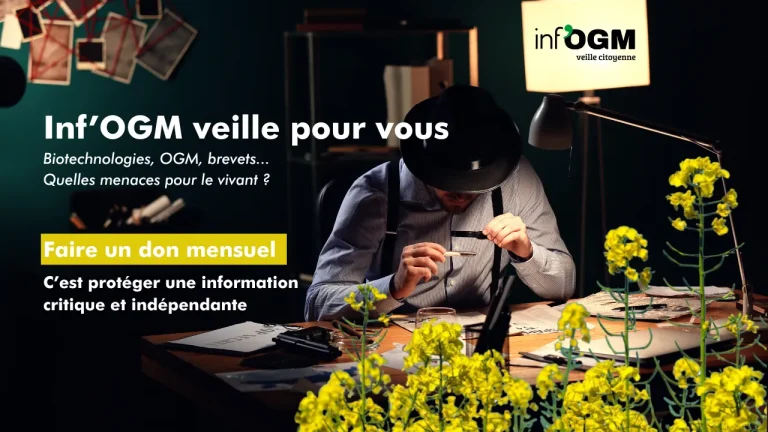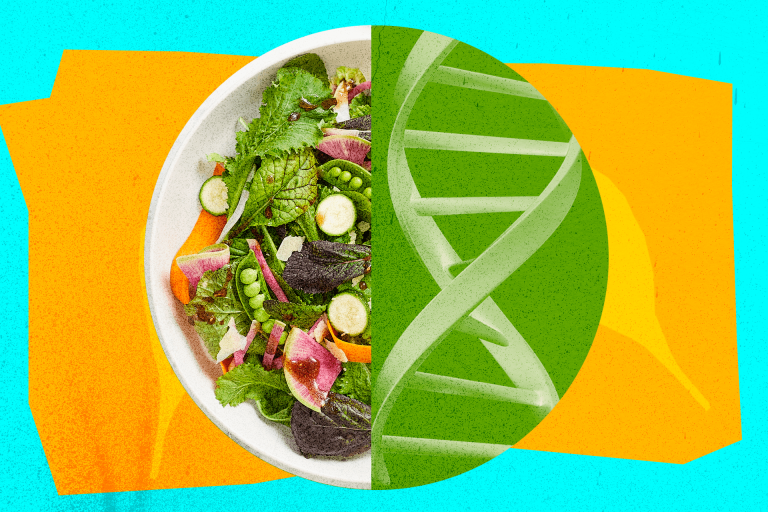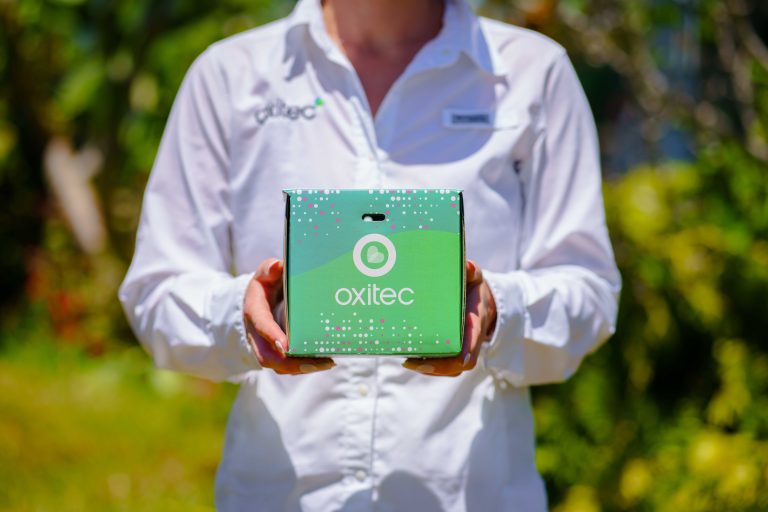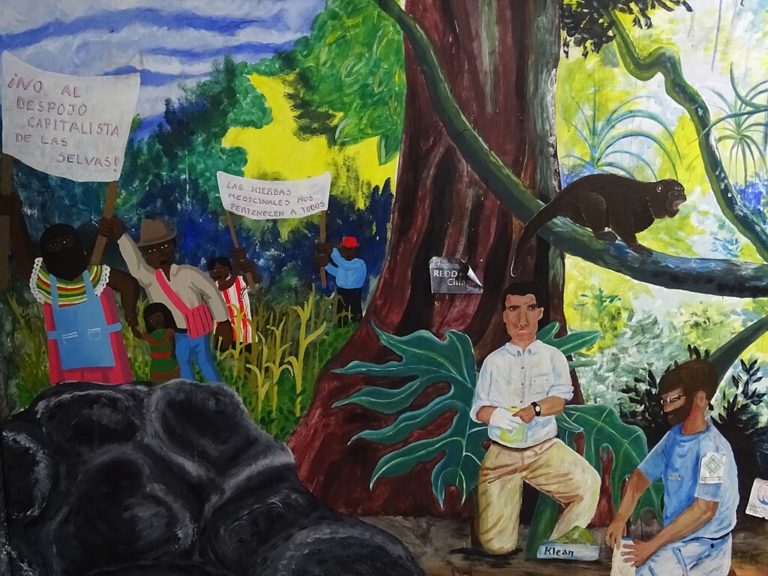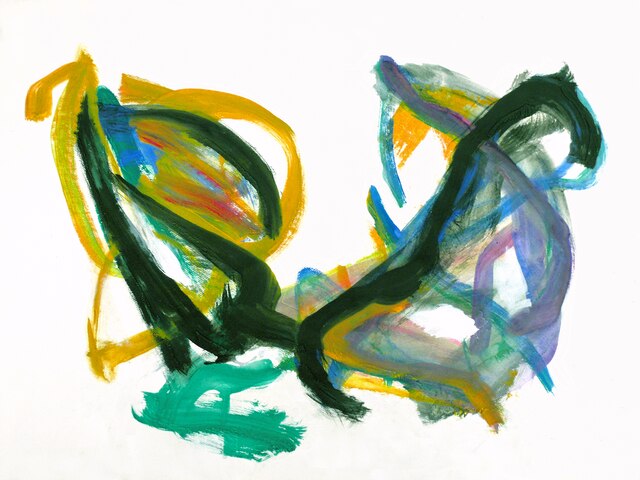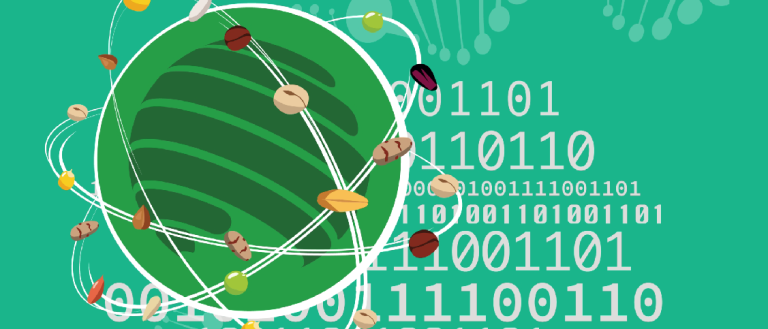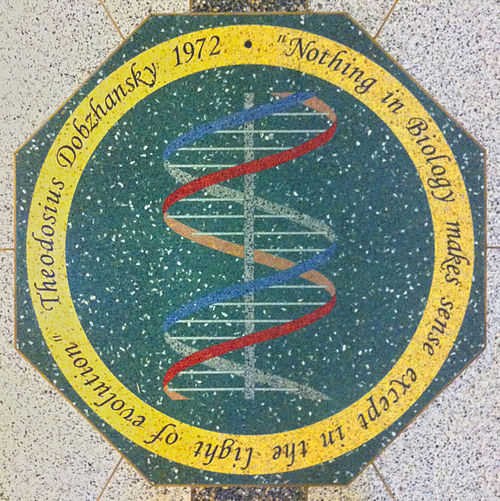Actualités
Jabal: a non-GMO wheat more resistant to drought
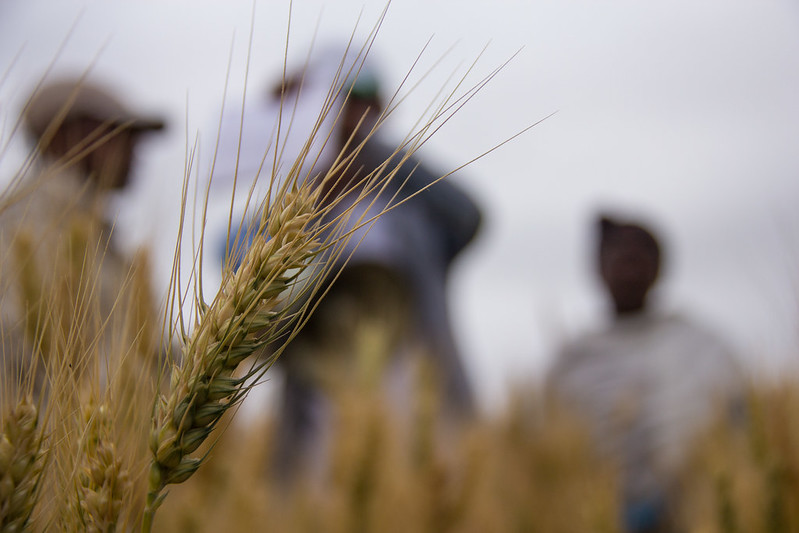
Jabal, a non-GMO drought-resistant wheat variety, will soon be grown commercially in Morocco. At a time when it is mentioned to adapt new plant varieties to climate change, particularly through genetic modification, we thought it would be interesting to show that other ways are possible, even if they are not farmers’ seeds and even if the risks of appropriating genetic sequences of interest have not been completely ruled out…
The Jabal durum wheat variety is the result of a programme by Icarda, the International Center for Agricultural Research in the Dry Areas (based in Lebanon) [1]. This international centre (with public and private funding) is itself part of a network of international agricultural research centres, the CGIAR [2], a public-private partnership funded, among others, by the Bill and Melinda Gates Foundation. This Foundation is known for pushing technological solutions that often involve GMOs [3]. This is why the announcement in many media [4] of the development of this new “non-GMO” variety merited an investigation by Inf’OGM, in order to verify this claim of “non-GMO” character, whether it is transgenic or derived from other methods. To this end, we interviewed one of its designers, Filippo Bassi, a researcher at Icarda (see below). In an interview in 2019, he declared himself “a great supported of GMO and especially Crispr/Cas”, and regretted the European blockages: “It is a shame because as scientists we have been crippled by this. But we are not politicians, so we need simply to accept and work on “legal” technologies” [5]. Which probably explains why, for the time being, he says he is working without GMOs…
Dissemination of elite varieties through participatory research
But first, let us zoom in on the institutional framework of this research. This wheat variety was developed within the framework of the DIIVA-PR programme [6], itself developed within the CWR (Crop wild relatives) project. The CWR project ran from 2011 to 2021 with support from the Norwegian government. It aimed to use the potential of crop wild relatives for the development of new climate change resistant varieties.
The Norwegian government? Yes, the same one that co-funds and hosts the Svalbard Global Seed Vault [7]. And this is no coincidence, since all international breeding research programmes today involve firstly, banks of “genetic resources” (physical, in the form of seeds), then genome sequencing and the identification of genes of interest, all of which is then stored in computers in the form of genetic sequencing information (DSI, digital sequence information).
The general idea of the DIIVA-PR programme is that researchers identify interesting characteristics of ’wild’ cousins (or local varieties) of cultivated varieties [8] and, by crossing, integrate them into elite varieties… All this under the eye of observant farmers who select the varieties that, in the end, appear to be the best. This programme has been applied to three species in particular: wheat, barley and lentil. In this interview, we will look at the details and results obtained with durum wheat.
This programme has been extended into a new three-year project, BOLD-DIVA-PR II (Dissemination of ICARDA Varieties through Participatory Research), with funding of more than one million dollars, in Morocco, Tunisia, Ethiopia, Senegal, Nigeria and Sudan [9]. The aim is to evaluate local barley and durum wheat varieties in the field for various traits of interest in these countries, crossbreed them and evaluate their performance and farmers’ preferences through participatory actions… Then make them accessible to everyone (farmers, breeders…), in particular by making all the data freely available online.
The interview therefore also focused on intellectual property, which the researcher assures us is totally regulated by the material transfer agreement that each recipient must sign before using the variety (see below). However, the fact that the genetic information on this wheat has been made freely available online opens up the possibility of appropriating part of this heritage, if a seed company claims to modify one of the genes slightly and assigns it a function.
Here is the interview with Filippo Bassi, a researcher at Icarda and one of the breeders of this wheat, who explains to Inf’OGM the genesis of the wheat and part of its future.
Inf’OGM: Jabal, the drought-resistant wheat, is the result of crossing a durum wheat Triticum durum with the wild wheat Aegilops speltoides. How was this cross achieved?
Filippo Bassi (FB): The cross is made in a greenhouse by first emasculating (removing), with small forceps, the immature anthers [10] of the flower of a modern line of wheat so that it becomes ’female’. Wheat is a monoecious plant, which means that the male and female organs are inside the same flower to promote self-pollination. So when the male part is removed, the flower becomes female and needs exogenous pollen, i.e. from another plant. So we took the pollen from the speltoides and sprinkled it on the female flower to generate a “hybrid” that combines the genetic information of both species: durum + speltoides. The resulting offspring were then used as ’females’ [again] by emasculation and a second modern durum wheat was used as a pollen donor. This three-way cross generated genetically stable offspring that were then further developed and selected to become “Jabal” [11].
Where do the wild and cultivated species of these crosses come from?
PB: The cross was [first] made in 2004 in Aleppo, Syria, and then in Terbol, Lebanon, for further selection. In 2012 it arrived in Morocco where I tested it in many places and finally used it in the Crop Trust-supported DIIVA-PR project [12].
The durum wheat species […], Triticum durum, is the species that is grown on more than 18 million hectares worldwide.
As for Jabal, its full pedigree is: Korifla/AegSpeltoidesSyr/Omrabi5. This means that the first cross was made between a Speltoides historically collected in Syria and an elite Cimmyt line [13] called Korifla, originally developed in Mexico and brought to Syria in the 1970s. Indeed, although susceptible to heat, Korifla was also considered a line with high yield potential, early flowering and good grain colour. Therefore, it was included in the development of Jabal.
Then a second cross was made between their descendants and a line from Icarda, called Om Rabi, which has been registered under different names in more than 20 countries as a drought-tolerant variety [14]. Thus, the wild species was an accession held in the Icarda genebank, while the modern durums were provided by the Icarda breeding programme. This programme, which has existed since the early 1970s, involves conventionally bred varieties. It has resulted in the release of more than 150 varieties in 22 countries.
What were the technical stages of these crosses? In particular, were there any laboratory steps to integrate certain genes? Were specific genes linked to this drought resistance identified?
PB: Jabal is the result of classical cross-pollination selection, so no laboratory steps were taken. However, the genes controlling this drought tolerance have been studied, in particular via a method called “Genome-wide association study” [15]. The result is a set of markers associated with the genomic region and through marker-assisted selection we have now defined with acceptable accuracy the genomic regions contributing to drought tolerance, especially with regard to roots and grain size.
Have any intellectual property rights (patents, plant breeders’ rights) been registered on these genes or varieties? Or is there free and full access to this Jabal variety?
PB: The Jabal variety has not yet been grown commercially in Morocco. Yields in test plots are similar to those of commercial varieties in normal years, but can be up to 20% higher in cold mountain regions in terminal drought.
Jabal will be distributed by the seed company Benchaib Semences, which has the exclusive right to market it in Morocco [16]. The sale of ’good seeds’ (certified seeds) is allowed in Morocco. This means that any farmer can buy seed from Benchaib, sow it in his own field and then sell the harvest to his neighbours. However, only farmers who sow “officially certified” seed can benefit from a government subsidy, and only Benchaib is allowed to market “officially certified seed”.
Icarda retains all rights for its use in breeding.
In addition, there is no patent on Jabal or its genes, so anyone is free to use it as they wish. Icarda has already provided it to more than 55 partners around the world under a Standard Material Transfer Agreement (SMTA) [17], which essentially protects its form by creating intellectual property that would prevent others from using it. We only allow commercial protection for companies that distribute and use it in their own country. ATTM is registered in the multilateral system of the International Seed Treaty (Tirpaa [18]). As such, it applies to anyone using this material. Thus, any company attempting to patent Jabal without the express consent of Icarda would be in breach of this ATTM. The Plant Treaty could then take legal action on behalf of Icarda in such cases, but normally, once the company is aware of the infringement, it tends to back off on its patenting activities.
Jabal can therefore be said to be ’fully open access’ with some limitations. On the other hand, it has also been available to French breeders for some years, and has for example been sent to the company Florimond-Desprez [19].
[1] Initially based in Syria in 1975, Icarda moved in 2014 to Lebanon. Its genetic resources bank, created in Aleppo (Syria) in 1985, has been progressively moved, completed and, for a part inaugurated in June 2022 in Rabat (Morocco), another part being in the Bekaa plain (Lebanon).
Pigaglio, R., « L’Icarda inaugure sa banque de semences de plantes – Interview de Ahmed Amri », Conjoncture.info, 10 juin 2022.
[2] CGIAR: formerly an acronym for Consultative Group on International Agricultural Research.
[3] See, among others:
, « Le changement climatique : une opportunité pour les OGM ? », Inf’OGM, 15 December 2022 ;
, « Ghana : le niébé OGM transgénique autorisé », Inf’OGM, 25 October 2022 ;
, « Inde : traitement de faveur pour les OGM non transgéniques », Inf’OGM, 14 April 2022 ;
, « Pourquoi Bill Gates n’est pas le bienfaiteur de l’humanité », Inf’OGM, 20 May 2019.
[4] « Jabal, une nouvelle variété de blé résistant à la sécheresse », Agra, 4 janvier 2023;
Lakhani, N., “Jabal: the new wheat scientists say can withstand extreme heat and drought”, The Guardian, 5 December 2022.
[5] Icarda, “Interview with Filippo Bassi, Senior Scientist – Durum Breeder ICARDA”, 28 July 2019.
[6] DIIVA-PR programme: dissemination of interspecific Icarda cultivars and elites through participatory research.
[7] , « Svalbard : pour l’humanité ou pour les semenciers ? », Inf’OGM, 14 December 2016.
[8] « A crop wild relative (CWR) is a species or variety of wild plant closely related to a domesticated plant (…) » (Wikipedia). In fact, there is a continuum from “wild” to “local variety”, from “never cultivated” to “somewhat” to “much” cultivated: this is the history of mass selection in agriculture. The dichotomy “either it’s wild and therefore not a local variety, or it’s a local variety and it’s no longer wild” is therefore to be nuanced…
[9] Internet page of the project on the Icarda website.
[10] Anther: the terminal part of the stamen, the male organ of the flower, which produces and contains the pollen.
[11] The full history of the cross is recorded in the following ’breeding history’: ICDJMC04-032-BthL(Bulksel)-0Ts-0Ts-7T-0T-0MCH-0MCH-0AUB in “Supplementary Table S1. Pedigree of entries used for testing the genetic gain of ICARDA’s breeding program”.
[12] The Global Crop Trust Diversity is an international organisation established in 2004 within the FAO, officially non-profit, dedicated to conserving crop diversity and making it available worldwide for the benefit of all. It was funded in 2007 by the Bill and Melinda Gates Foundation, among others, with $37.5 million (https://www.croptrust.org/resources/gates-foundation-funds-rescue-of-worlds-crop-biodiversity/).
[13] Cimmyt is the International Maize and Wheat Improvement Centre: one of 15 international crop research centres within the CGIAR.
[14] According to a former collaborator of Icarda, a collector of the endemic species Speltoides, the latter resists heat by its rather unusual flowers, whereas Om Rabi does so by its roots. The Icarda cultivar Om Rabi is a cross between the elite variety ’Jori’ and the local cultivar ’Haurani’, which was made in 1981.
See : M.M. Nachit, “Durum wheat breeding for Mediterranean drylands of North Africa and West Asia”, S. Rajaram, E.E. Saari, G.P. Hettel (Eds.), Durum Wheats: Challenges and Opportunities, Wheat Special Report No. 9, CIMMYT, Ciudad Obregon, Mexico, 1992.
[15] Known as GWAS: A genome-wide association study is an analysis of many genetic variations in many individuals to study their correlations with phenotypic traits (Wikipedia).
[16] When contacted about the marketing of this new variety, the seed company did not respond.
[17] , « Des semences partagées, mais des droits paysans théoriques », Inf’OGM, 29 October 2013
and the following document :
[18] , « Le Tirpaa, traité international des semences, en danger », Inf’OGM, 27 November 2019.
[19] When contacted about the possible use of this variety, the company did not reply. We do know, however, that it has set up a joint venture with the Argentine company Bioceres to develop drought-resistant transgenic wheat (HB4).
, « Blé OGM en Argentine : feu vert pour sa commercialisation », Inf’OGM, 10 January 2023.






